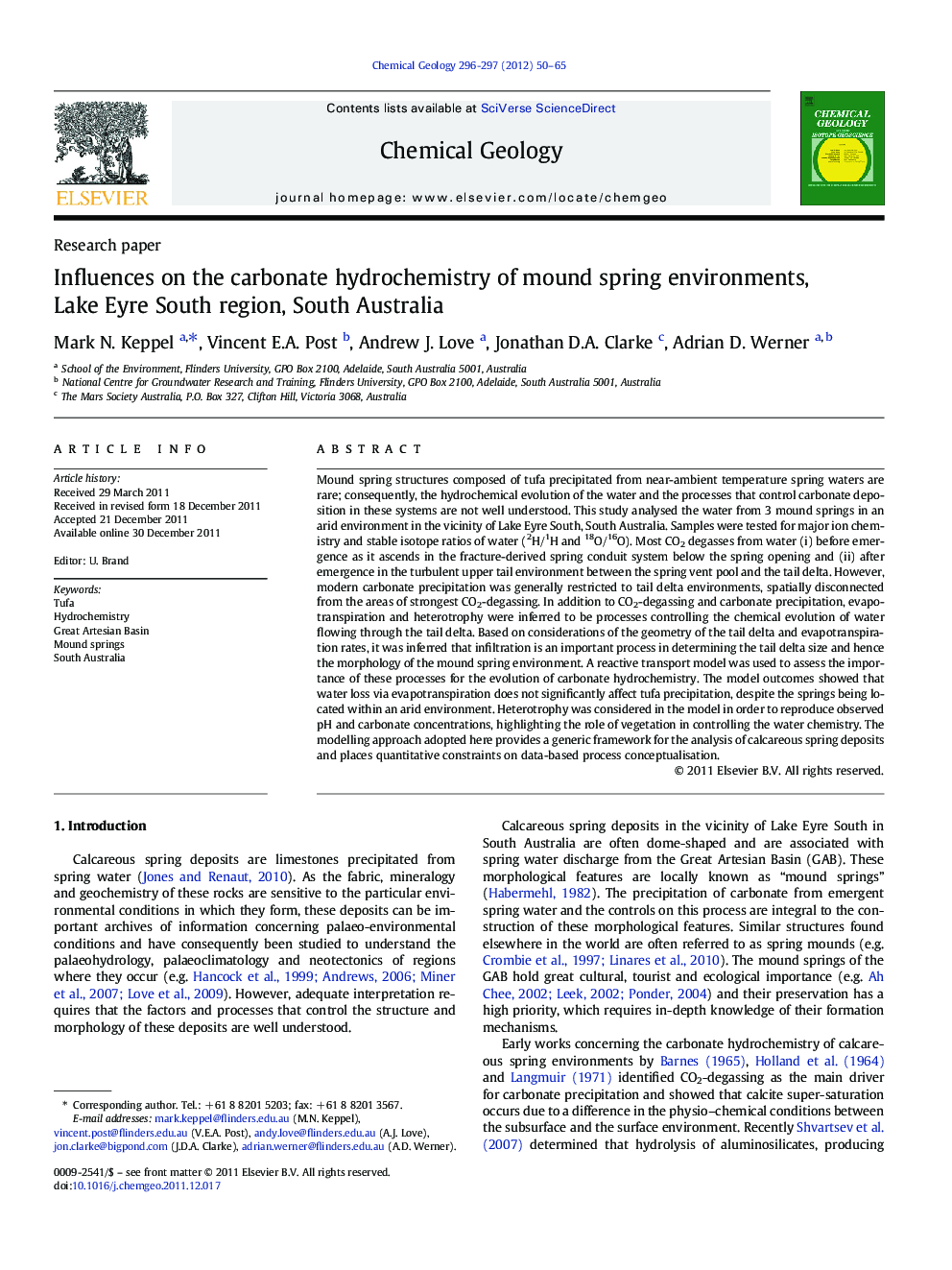| کد مقاله | کد نشریه | سال انتشار | مقاله انگلیسی | نسخه تمام متن |
|---|---|---|---|---|
| 4699526 | 1637652 | 2012 | 16 صفحه PDF | دانلود رایگان |

Mound spring structures composed of tufa precipitated from near-ambient temperature spring waters are rare; consequently, the hydrochemical evolution of the water and the processes that control carbonate deposition in these systems are not well understood. This study analysed the water from 3 mound springs in an arid environment in the vicinity of Lake Eyre South, South Australia. Samples were tested for major ion chemistry and stable isotope ratios of water (2H/1H and 18O/16O). Most CO2 degasses from water (i) before emergence as it ascends in the fracture-derived spring conduit system below the spring opening and (ii) after emergence in the turbulent upper tail environment between the spring vent pool and the tail delta. However, modern carbonate precipitation was generally restricted to tail delta environments, spatially disconnected from the areas of strongest CO2-degassing. In addition to CO2-degassing and carbonate precipitation, evapotranspiration and heterotrophy were inferred to be processes controlling the chemical evolution of water flowing through the tail delta. Based on considerations of the geometry of the tail delta and evapotranspiration rates, it was inferred that infiltration is an important process in determining the tail delta size and hence the morphology of the mound spring environment. A reactive transport model was used to assess the importance of these processes for the evolution of carbonate hydrochemistry. The model outcomes showed that water loss via evapotranspiration does not significantly affect tufa precipitation, despite the springs being located within an arid environment. Heterotrophy was considered in the model in order to reproduce observed pH and carbonate concentrations, highlighting the role of vegetation in controlling the water chemistry. The modelling approach adopted here provides a generic framework for the analysis of calcareous spring deposits and places quantitative constraints on data-based process conceptualisation.
► Hydrochemistry of mound spring environments, Lake Eyre region, Australia.
► Reaction transport model developed to assess importance of factors and processes.
► CO2 degassing largely occurs in subsurface and turbulent, near-spring environments.
► Carbonate precipitation restricted to quiescent spring tail delta environments.
► Infiltration appears important in controlling spatial extent of spring wetland.
Journal: Chemical Geology - Volumes 296–297, 23 February 2012, Pages 50–65